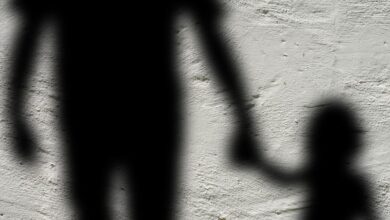
10 Hyper-specific Mental Disorders (And Movies About Them)
Writing about mental illness can be tricky because everyone’s perception is fundamentally different. Making films about mental illness is twice as tricky because films are a staple of popular culture and expose a wide audience to a very personal issue. Listed below are 10 hyper-specific mental disorders and 10 films that do (at least) a half-decent job at demonstrating how they work and how people with these disorders feel.

1. Alice in Wonderland
The Alice in Wonderland syndrome takes its name from the scene in the book where Alice finds herself shrunken, making everyday objects seem giant compared to her. The real-life consequences of this disorder haven’t (as of now) been shown in any movie, but a great visual of this disorder can obviously be found in the Alice in Wonderland movie or animated film.
2. Erotomania
Erotomania is being a fangirl/fanboy on a whole new level. People with erotomania are often physically attracted to and enamored by celebrities and politicians, and they believe (quite strongly) that every interview and public appearance of said celebrity has a secret message. They believe that the celebrities make subtle hints and send secret messages that confirm the person’s belief that the celebrity is also secretly attracted to them. Even when they are given a clear “no” signal, they believe there is an undercurrent of “yes” behind it. Marion Cotillard’s character in From the Land of the Moon demonstrates how erotomania affects the lives of ordinary people.

3. Paraphrenia
Sufferers of paraphrenia (not to be mistaken with Megalomania) are often victims of delusions of grandeur. If people with megalomania simply believe themselves to be God’s gift to earth, sufferers of paraphrenia also often feel paranoid, believing that everyone in their surrounding is out to get them. Any documentary about Napoleon Bonaparte will be a great depiction of paraphrenia.

4. OCD
Obsessive Compulsive Disorder (more commonly referred to as OCD) typically involves obsessions with order, cleanliness, and security. People with OCD often want everything in their environment to be perfect and are thrown off balance by misplaced objects, cracks in the road, or dust on their coffee table. While love for cleanliness is not the real problem, sufferers of OCD find themselves trapped in a vicious cycle of trying to control their environment, which gets in the way of their everyday responsibilities. As Good as It Gets shows Jack Nicholson overcoming his OCD in the name of love.

5. Capgras Delusion
Capgras Delusion makes people feel like somewhere out there their is an identical copy of them (a doppelganger) living a better version of their life. Extreme cases make people believe that they have, in fact, been completely replaced by said doppelganger. The feature film The Double shows Jesse Eisenberg living a life with this mental disorder.

6. Fregoli Delusion
Fregoli Delusion is the polar opposite of the Capgras Delusion. Rather than believing that they have been replaced with a copy, people suffering from the Fregoli Delusion believe that somebody that is very close to them inhabits all individuals around them. People look for common traits in others and begin to believe that everyone is a copy of that one person. Anomalisa follows a character that is living while suffering from the Fregoli Delusion.

7. Adele Syndrome
Similar to Erotomania, Adele Syndrome deals with obsessing over other people. Sufferers of the Adele Syndrome become obsessed with somebody they love, often choosing to dedicate their entire life to the pursuit of their love interest and neglecting any other responsibilities. Many of the symptoms resemble that of a deep depression, however the difference is that they are all centered around their love interest. The Story of Adele H shows a young woman following a British soldier and neglecting all other responsibilities, all because she is driven by love and obsession.

8. Quasimodo Syndrome
Quasimodo Syndrome can be considered the little brother of body dysmorphia. People with Quasimodo Syndrome believe they have a very, very specific flaw with their body, and they are always suspicious that everybody around them only sees them for this one flaw. The short film Contracuerpo demonstrates the struggle and challenges of living with Quasimodo Syndrome.

9. Cryptomnesia
People suffering from this mental disorder often have what they describe to be the opposite of deja vu – jamais vu. Cryptomnesia gets in the way of people remembering when a particular event took place or whether it happened in real life at all. They often have trouble remembering whether something happened in their dream or in their everyday life. Very often, people with Cryptomnesia lead creative lives, often unintentionally committing plagiarism. Known sufferers of Cryptomnesia include Nietzsche, Umberto Eco, and Colleen McCullough. The effects of Cryptomnesia are shown in the movie The Science of Sleep.

10. Multiple Personality Disorder
The name of this disorder speaks for itself. Multiple Personality Disorder often gets confused with schizophrenia. However, the most significant difference between the two is that MPD is just one of the many possible aspects of schizophrenia. To use my favorite squares-and-rectangles metaphor – not all schizophrenics have multiple personality disorder, but nearly all people suffering from multiple personality disorder are sufferers of schizophrenia. The movie Split shows Ewan McGregor living with Multiple Personality Disorder.





